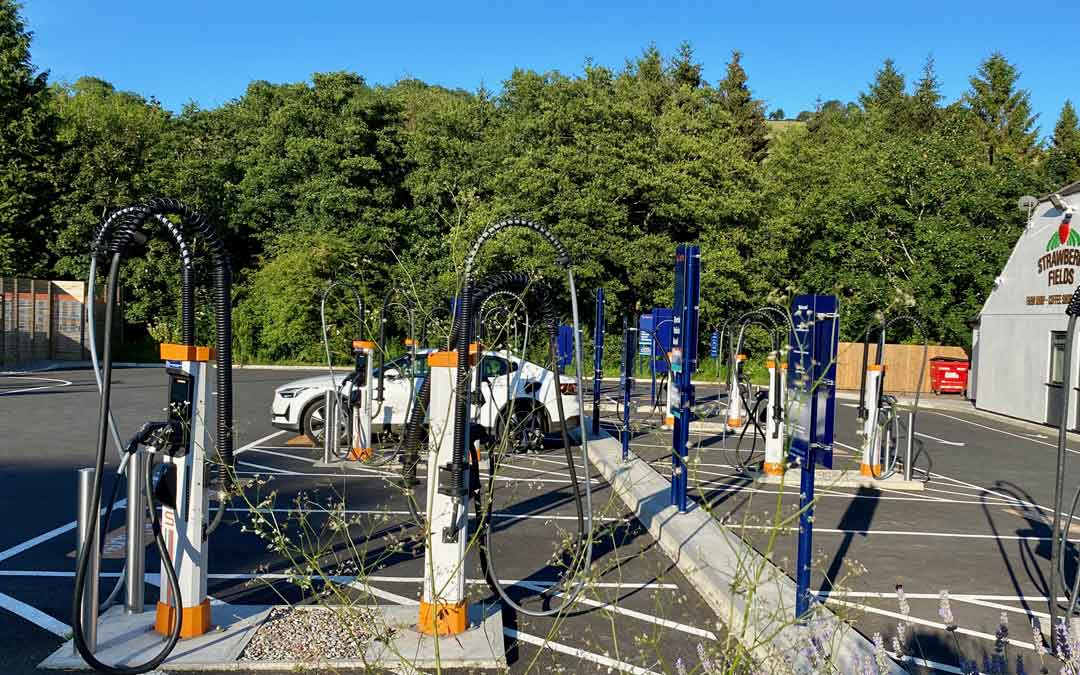Electric driving in the UK

Having driven an electric vehicle in Australia for over two years, a recent trip to the UK gave us an opportunity to see how drivers in other countries are managing the electric transition. We also wanted to see how distance driving in the UK compared to our two trips from Melbourne to Cairns. We had also been warned that we might face delays in charging, since the number of EVs in the UK is substantially higher than in Australia.
We picked up our Polestar (the identical car to the one we drive in Australia) in Oxford and set off. Driving a car we’re at home with certainly takes some of the stress out of driving and allowed us to make some useful comparisons.
Our first destination took us up towards Norwich and then Walsingham on the Norfolk coast. From there, we made our way for a charging session at Kings Lynn, located next to the ubiquitous Costa Coffee outlet. The revelation at this station was being able to simply tap our contactless card to start the charger. I have yet to come across this in Australia, where chargers frequently require a phone app. We also carried a ‘fob’ supplied by the car hire company which we could use at some chargers, with the cost added to our hire invoice. The simplicity of paying by card is a real incentive to people taking up EVs. In Australia it is quite frustrating to arrive at a charger only to find you need to download an app on the spot, possibly with limited mobile coverage.
Wales, just across the border from Crewe, was our next destination, stopping in Conwy and Llanfairfechan (‘Clan-fair-feckan’). It was a reality check to see every road sign in dual languages. We’ve gone some way towards this in Australia, using local Indigenous names. Making this universal across Australia might help us better appreciate some of our thousands of years of history.
After more criss-crossing Wales we briefly touched down in Cornwall, then Canterbury and back to Oxford.
We were pleased to note that despite large volumes of traffic, we only had to wait twice to charge the car, and only for a short while.
Although the UK is only marginally bigger than Victoria, we did cover enough distance to get a sense of what it is like to drive an EV there. Total distance covered was 2594 miles, or 4175 km. The total cost of charging came to $810. Our EV trip from Melbourne to Far North Queensland (a journey of well over 7000 km) cost less than $300, partly thanks to free charging in NSW.
In summary, it is easier to charge on the road in the UK compared with Australia, especially with the ability to use debit/credit cards without an app. EV chargers are more frequent in the UK, both around towns and villages and on the motorways. We also saw numerous examples of visible home EV chargers. In London, there are charging points located directly on light poles, solving the problem of residents who have to park on the street. There are also larger dedicated charging stations, like the one not far from Totnes and numerous ones within regular petrol stations.
While electricity pricing (and EV charging) in the UK is noticeably dearer than Australia (varying widely and often around double), it still worked out to be cheaper than petrol prices.
One huge advantage we have as EV users in Banyule, is the placement of free EV chargers by the Council. While these are not rapid chargers, they are fast enough to allow a solid charge if you factor in a walk or longer visit to local shops. Some shopping centres (Woolworths in Heidelberg, for example) have free charging, although some (Greensborough Mall) have now converted to paid charging.
Driving electrically in the UK was easy and I would recommend it to anyone visiting the UK. That said, if you navigate your way down country lanes, be prepared for fast moving oncoming traffic and a tight squeeze with three-metre high hedges scraping the car. Of course, you can always go one better in London and use buses and trains, which are incredibly frequent and easy to use.
Written by Paul Gale-Baker
